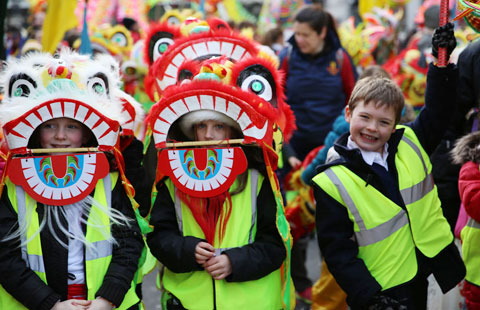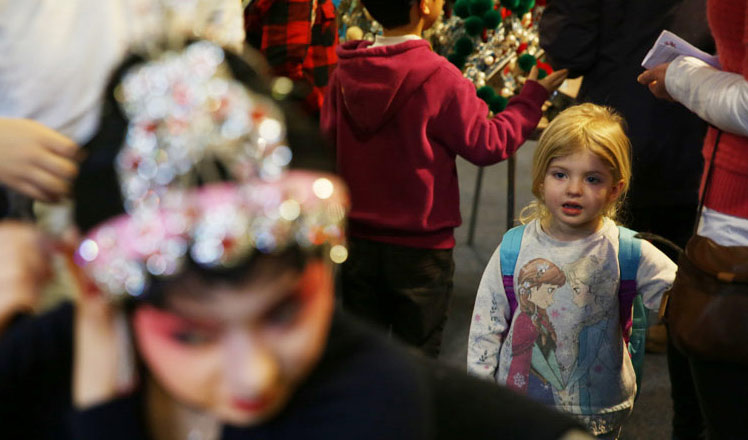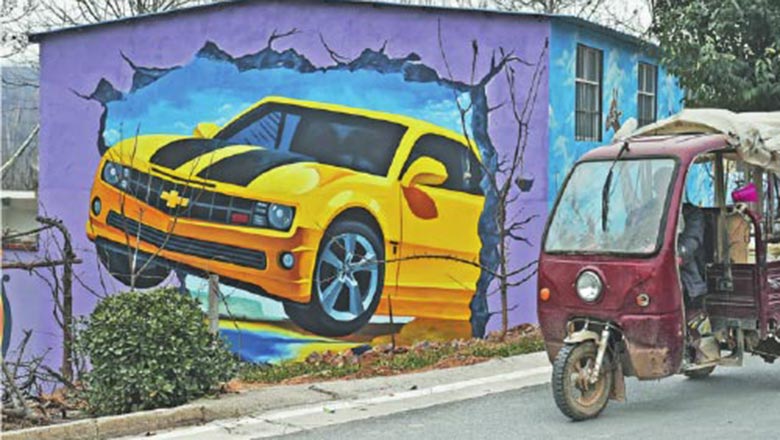Italian show celebrates strength of Chinese characters
Updated: 2016-02-16 11:22
(Xinhua)
|
|||||||||
 |
|
Xu Bing has created many works related to Chinese characters. Some of them are now on display at the Milan Triennale.[Photo by Jiang Dong/ China Daily] |
For the first time in Italy, the strength of Chinese characters in the works of a leading artist was central to an exhibition that kicked off on Saturday at the Palazzo dell'Arte (Palace of Art), the headquarters of the Triennale art institution.
Xu Bing, born in Chongqing city in 1955, is one of China's most acclaimed living artists. His Character of Characters, a video animation illustrating the birth and relation of Chinese characters with human history, was the starting point of this project aimed at making the excellence of Chinese art known to a Western audience, curator Hans de Wolf said at the exhibition preview.
"The idea to make this exhibition occurred a couple of years ago, when I saw for the first time this absolute masterpiece of Xu Bing at the Central Academy of Fine Arts in Beijing," De Wolf recalls. "For me it was a moment of inspiration. I understood immediately the extreme quality of this artwork."
Yet also in the same year 2013, the Venice Biennale welcomed more than 100 Chinese artists who won no attention, a sign that Western audiences were not much aware of the fact that in China there were excellent artists, De Wolf says.
"That is why I decided to put Xu Bing at the center of an exhibition gathering other artists from different countries but all dealing with the same phenomenon, written language," he says.
It was in this way that the Milan Triennale's exhibition running through March 6 and titled Xu Bing Worlds of Words/Goods of Gods was born. It brought together eight artists from Africa, Europe and India who have all explored the world of words.
"Looking back at my life as an artist, I find that I have made a lot of works related with Chinese characters," Xu says. "In fact, when we write a word, we are actually drawing a picture. Our children copy thousands and thousands of characters and they draw thousands and thousands of pictures."
This culture and education system aroused profound reflection in his mind about the relation between China's culture and language, he says.
In Chinese history, a new dynasty always started with the reform of the language.
Xu says in his rich life experience-he has witnessed the "cultural revolution" (1966-76) and has lived for 18 years in the United States before going back to China-he has put a "high degree of research" in these artworks produced in a stretch of time of more than 30 years.
All of this complexity together with the contrasts and harmony born from his encounter with Western culture is reflected in Square Word Calligraphy, also on display at the exhibition. At first glance it appears to be Chinese characters, but it is a new way of rendering English. Chinese viewers expect to be able to read it but cannot, while Western viewers are surprised to find that they can read it.
In Book from the Sky, another of his artworks, invented characters play a joke as they look real but have no meaning.
"Here I tried to present the major elements of characters, a functional one and a decorative one," Xu explains.
"Take calligraphy as an example, it is like a ritual for worshipping characters, which become 'holy', something higher than a tool passing information, and able to give space to knowledge instead of giving things."
"I never think that an art form or style is very important in order to be looked at as art. I just want my artworks to benefit humankind, help people think and go to a right way of thinking," he adds.

 Chinese Lunar New Year marked in central London
Chinese Lunar New Year marked in central London
 Top 10 most difficult cities in China to get a taxi
Top 10 most difficult cities in China to get a taxi
 Sichuan opera charms British children
Sichuan opera charms British children
 Thousands of passengers stranded at Dalian airport
Thousands of passengers stranded at Dalian airport
 Visitors enjoy cherry blossoms in South China's Guangdong
Visitors enjoy cherry blossoms in South China's Guangdong
 Sichuan opera charms British children
Sichuan opera charms British children
 Clash of civilizations in a fairytale village
Clash of civilizations in a fairytale village
 Cultural exhibition opens at Tibet Museum in Lhasa
Cultural exhibition opens at Tibet Museum in Lhasa
Most Viewed
Editor's Picks

|

|

|

|

|

|
Today's Top News
Will US-ASEAN meeting be good for region?
Accentuate the positive in Sino-US relations
Dangerous games on peninsula will have no winner
National Art Museum showing 400 puppets in new exhibition
Finest Chinese porcelains expected to fetch over $28 million
Monkey portraits by Chinese ink painting masters
Beijing's movie fans in for new experience
Obama to deliver final State of the Union speech
US Weekly

|

|








